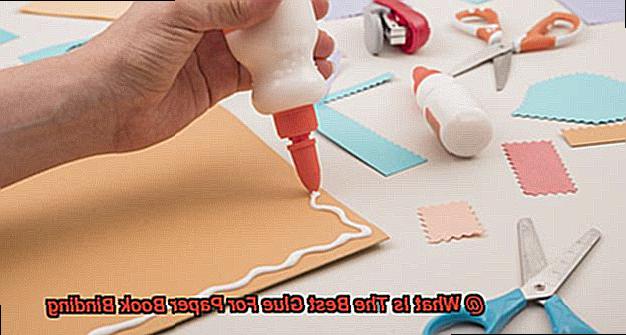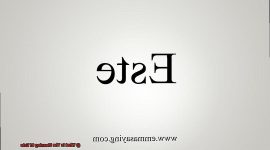
Welcome to our blog post about the fascinating realm of Spanish grammar.
Today, we’re delving into the disparities between two deceptively similar words: Este and Esté. Though they may appear alike, these two terms have entirely distinct roles, and grasping their dissimilarities is crucial for effective communication in Spanish.
So, whether you’re learning Spanish or simply intrigued by the intricacies of the language, get ready as we unravel the subtleties between Este and Esté.
What is the difference between Este and Est¨¦
Contents
- 1 What is the difference between Este and Est¨¦
- 2 Grammatical Functions of “Este”
- 3 Gender and Number Agreement of “Este”
- 4 The Imperative Form of “Estar”
- 5 Conjugations of “Esté” for Third-Person Singular Subjects
- 6 Understanding the Difference Between “Este” and “Esté”
- 7 Adjective vs Verb Use
- 8 Expressing Ideas and Intentions Accurately with Spanish Language
- 9 Conclusion
When learning a new language, it’s important to grasp the nuances and subtleties that make it unique. In Spanish, two words that often cause confusion for learners are “Este” and “Esté.”
While they may seem similar at first glance, they have distinct meanings and uses. Let’s dive into the differences between these two words to enhance your understanding of the Spanish language.
Este: Demonstrative Adjective or Pronoun

“Este” is a versatile word that serves as both a demonstrative adjective and pronoun. As a demonstrative adjective, it means “this” in English. It is used to point out something that is close to the speaker or the person being addressed. For example, if you want to refer to a book that is within your reach, you would say “este libro” (this book). The word “este” agrees in gender and number with the noun it modifies, so it becomes “esta pluma” (this pen) when referring to a feminine noun.
As a demonstrative pronoun, “este” can stand alone without a noun. For instance, if someone asks you which book you prefer, you can reply with “este” (this one) to indicate your choice.
Esté: Subjunctive Mood of the Verb “Estar”
On the other hand, “Esté” is the third person singular form of the subjunctive mood of the verb “estar,” which means “to be” in English. The subjunctive mood is used to express doubts, wishes, desires, recommendations, or hypothetical situations. When we use “Esté,” we are expressing uncertainty or giving advice or suggestions.
For example, if you hope that someone is well, you would say “Espero que esté bien” (I hope he/she is well). In this context, “esté” conveys the uncertainty of the person’s well-being. Similarly, if you want to recommend that someone be attentive, you would say “Recomiendo que esté atento” (I recommend that he/she be attentive).
Understanding the difference between “Este” and “Esté” is crucial for effective communication in Spanish. Using these words correctly can help you convey your intended meaning accurately and avoid confusion.
In conclusion, “Este” is a demonstrative adjective or pronoun used to indicate something close by, while “Esté” is the subjunctive form of the verb “estar” used for expressing uncertainty, wishes, recommendations, or hypothetical situations. By mastering the usage of these words, you can elevate your Spanish skills and communicate more effectively with native speakers.
Grammatical Functions of “Este”
When learning Spanish, it’s essential to understand the grammatical functions of words like “este” and “esté.” Let’s take a closer look at these words and how they are used in different contexts.
Este as a Demonstrative Adjective:
- Este is a demonstrative adjective that modifies a noun to indicate something near the speaker or the person being addressed.
- It agrees in gender and number with the noun it modifies. For example:
- Este libro (this book)
- Esta casa (this house)
- Estos perros (these dogs)
- Estas flores (these flowers)
Este as a Demonstrative Pronoun:
- Este can also function as a pronoun, replacing a noun or noun phrase.
- It stands alone without a noun and represents the object being referred to. For example:
- ¿Prefieres el libro rojo o este? (Do you prefer the red book or this one?)
- Me gusta ese coche, pero prefiero este. (I like that car, but I prefer this one.)

Esté as the Subjunctive Mood of “Estar”:
- Esté is the third person singular form of the subjunctive mood of the verb “estar” (to be).
- The subjunctive mood is used to express doubts, desires, recommendations, or hypothetical situations.
- Esté indicates uncertainty or a recommendation. For example:
- Espero que esté bien. (I hope he/she is well.)
- Recomiendo que esté atento. (I recommend that he/she be attentive.)
Comparison between “Este” and “Esté”:
Grammatical Function | Este | Esté
———————|——|——
Demonstrative Adjective | Modifies a noun indicating proximity | –
Demonstrative Pronoun | Replaces a noun or noun phrase | –
Subjunctive Mood | – | Expresses uncertainty or recommendation

Gender and Number Agreement of “Este”
Hola amigos. Are you ready to dive into the fascinating world of Spanish grammar? Today, we’ll be unraveling the gender and number agreement of two important words: “este” and “esté.” Grab your sombrero, and let’s get started.
Este – The Demonstrative Adjective:
When it comes to gender agreement, “este” is a pro at matching the gender of the noun it modifies. Here’s how it works:
Masculine Singular: Use “este” with singular masculine nouns.
Examples: “este libro” (this book), “este chico” (this boy).
Feminine Singular: Swap “este” for “esta” when modifying singular feminine nouns.
Examples: “esta mesa” (this table), “esta chica” (this girl).
Plural Form: To refer to multiple objects or people, switch to the plural form.
Examples: “estos libros” (these books), “estas chicas” (these girls).
Esté – The Subjunctive Verb:
Now, let’s shift gears to the intriguing world of verbs. “Esté” belongs to the subjunctive mood of the verb “estar.” Here’s what you need to know:
Gender Agreement: Lucky for us, gender doesn’t play a role here. Whether it’s a masculine or feminine noun, “esté” remains unchanged.
Example: “Espero que él esté feliz” (I hope he is happy), “Espero que ella esté feliz” (I hope she is happy).
Number Agreement: This is where the verb form does change based on the number of the subject.
Singular Subject: Pair “esté” with a singular subject.
Example: “Espero que el perro esté tranquilo” (I hope the dog is calm).
Plural Subject: When the subject is plural, use “estén” instead.
Example: “Espero que los perros estén tranquilos” (I hope the dogs are calm).
The Imperative Form of “Estar”
Get ready to learn how to give commands and make requests using the imperative form of “estar” in Spanish. This versatile verb form allows you to express yourself with authority and precision. Whether you’re telling someone to stay put or asking them to pay attention, the imperative form of “estar” has got your back. So, without further ado, let’s dive into the world of commands and requests in Spanish.
Using the Imperative Form of “Estar”
- Affirmative Form: The affirmative form of the imperative is used to give positive commands. To form it, simply take the base form of “estar” and add the appropriate ending depending on the subject:
- For tú (you, informal): ¡Estáte. (Stay.)
- For vosotros/vosotras (you all, informal): ¡Estad. (Stay.)
- For usted (you, formal): ¡Esté. (Stay.)
- For ustedes (you all, formal): ¡Estén. (Stay.)
- Negative Form: The negative form of the imperative is used to give negative commands or express prohibitions. To form it, place “no” before the verb:
- For tú: ¡No estés. (Don’t be.)
- For vosotros/vosotras: ¡No estéis. (Don’t be.)
- For usted: ¡No esté. (Don’t be.)
- For ustedes: ¡No estén. (Don’t be.)

Examples and Usage
Now that you know how to form the imperative form of “estar,” let’s see it in action:
- Giving Instructions:
- Tú: ¡Estáte aquí. (Stay here.)
- Ustedes: ¡Estén tranquilos. (Be calm.)
- Making Requests:
- Tú: ¡Estáte atento. (Be attentive.)
- Usted: ¡Esté callado. (Be quiet.)
Remember, the imperative form of “estar” is commonly used in informal situations or when giving direct commands. However, be mindful of your relationship with the person you’re speaking to, as it can come across as impolite if not used appropriately.
Conjugations of “Esté” for Third-Person Singular Subjects
When it comes to conjugating the verb “estar” for third-person singular subjects in Spanish, there are two forms to consider: “este” and “esté.” These forms have different meanings and are used in different contexts.
“Este” – Present Tense Form:
- This form is used to express a state or condition of being in the present.
- Example: “Él está en casa” (He is at home).
- In this sentence, “está” is the conjugated form of “estar” for the third-person singular subject.
“Esté” – Subjunctive Mood Form:
- This form is used to express doubt, uncertainty, or a desire for something to happen.
- Example: “Espero que él esté en casa” (I hope that he is at home).
- In this sentence, “esté” is the subjunctive form of “estar” for the third-person singular subject.
- The use of the subjunctive mood indicates uncertainty or doubt about whether the person is actually at home.
To further understand the differences between these conjugations, let’s compare them:
| Conjugation | Meaning | Usage |
|————-|——————————|——————————————————|
| Este | Expresses state or condition | Present tense |
| Esté | Expresses doubt or desire | Subjunctive mood (uncertainty, wishes, suggestions) |
From personal experience, using the correct form of “estar” is crucial in conveying your intended meaning. For instance, if you want to express a fact or a state of being in the present, using “este” is appropriate. However, if you want to express uncertainty or desire for something to happen, using “esté” in the subjunctive mood is more suitable.
It’s important to note that the subjunctive mood is used in various contexts, such as expressing wishes, giving advice, making suggestions, or talking about hypothetical situations. Understanding when to use the subjunctive mood can greatly enhance your ability to communicate effectively in Spanish.
Understanding the Difference Between “Este” and “Esté”
When learning Spanish, it’s essential to grasp the nuances of certain words and their usage. Two words that often cause confusion for learners are “este” and “esté.” In this blog post, we will explore the differences between these two words, highlighting their unique meanings and functions. By the end, you’ll have a clear understanding of when to use “este” and when to use “esté” in your Spanish conversations.
Este: Demonstrative Adjective
- “Este” is a demonstrative adjective that means “this” in English.
- It is used to refer to something close in proximity to the speaker.
- Examples:
- “Este libro” (This book)
- “Esta casa” (This house)
- “Estos zapatos” (These shoes)
Esté: Subjunctive Form of “Estar”
- “Esté” is the subjunctive form of the verb “estar,” meaning “to be.”
- It expresses doubt, uncertainty, or subjective opinion.
- Examples:
- “Dudo que él esté aquí.” (I doubt that he is here.)
- “Espero que ella esté bien.” (I hope she is well.)
- “Quiero que tú estés feliz.” (I want you to be happy.)
Comparison Table:
| | Este | Esté |
|—————–|——————–|——————–|
| Function | Demonstrative | Subjunctive |
| Meaning | This | To be |
| Proximity | Close | Doubt/uncertainty |
| Agreement | Gender and number | N/A |
| Usage Examples | Este libro | Dudo que él esté aquí |
Adjective vs Verb Use
When learning Spanish, it’s important to understand the distinction between adjectives and verbs. In this section, we will focus on the usage of “este” as an adjective and “esté” as a verb in Spanish. Let’s dive into the differences and explore how these words function in different contexts.
Este as an Adjective:
“Este” is used as an adjective to indicate proximity or to refer to something close to the speaker. It agrees in gender and number with the noun it modifies. Here are some examples:
- Este libro (masculine singular) – This book
- Esta pluma (feminine singular) – This pen
- Estos libros (masculine plural) – These books
Estas plumas (feminine plural) – These pens
As you can see, the form of “este” changes based on the gender and number of the noun it describes. This helps to provide clarity and accuracy in communication.
Esté as a Verb:
“Esté” is the third-person singular form of the verb “estar,” which means “to be.” It is used to express a temporary state or condition. Here are some examples:
- Está cansado/a – He/she is tired.
- Está en la casa – He/she is in the house.
- Está nublado – It is cloudy.
- “Este libro” (This book)
- “Este carro” (This car)
- “Esta casa” (This house)
- “Espero que esté bien” (I hope he/she is well)
- “Dudo que esté disponible” (I doubt it is available)
- “No creo que esté correcto” (I don’t think it is correct)
Similar to “este,” “esté” also agrees in gender and number with the subject it refers to:
Están cansados/as – They are tired.
Están en la casa – They are in the house.
It’s important to note that unlike “este” as an adjective, “esté” as a verb can refer to any subject, regardless of its proximity to the speaker.
Expressing Ideas and Intentions Accurately with Spanish Language
Understanding the subtle differences between words in a foreign language is essential for accurately expressing ideas and intentions. In Spanish, two words that may be confusing for learners are “este” and “esté.” Let’s dive into these words and explore how they can be used to convey meaning effectively.
Este: Demonstrative Adjective
“Este” is a demonstrative adjective that translates to “this” in English. It is used to point out or identify something that is close to the speaker. Here are some examples:
Remember, “este” agrees in gender and number with the noun it modifies. If the noun is masculine and singular, use “este.” If it is feminine and singular, use “esta.”
Esté: Present Subjunctive of “Estar”
“Esté,” on the other hand, is the present subjunctive form of the verb “estar,” which means “to be.” It is used to express doubt, uncertainty, or subjective opinions about the state or condition of something or someone. Consider these examples:
Note that “esté” is used when referring to a specific person or thing in the third person singular. If you are talking about yourself or someone else in the first or second person, different forms of the verb “estar” should be used along with the appropriate pronouns.
In Conclusion
By understanding the difference between “este” as a demonstrative adjective and “esté” as the present subjunctive form of “estar,” you can accurately express your ideas and intentions in Spanish. Whether you are pointing out something close to you with “este” or expressing doubt about the state of something or someone with “esté,” these words are essential for effective communication.
Conclusion
The distinction between Este and Est¨¦ lies in their usage and meaning. Este is a Spanish word that translates to “this” in English, while Est¨¦ means “is” or “it is.” Although they may sound similar, their functions are distinct.
Este is a demonstrative adjective used to indicate proximity. It refers to something close to the speaker or the person being addressed. For example, if you want to say “this book,” you would use the word “este libro” in Spanish.
On the other hand, Est¨¦ is a form of the verb “ser,” which means “to be.” It is used to express existence or identity. For instance, if you want to say “it is raining,” you would say “est¨¢ lloviendo” in Spanish.
In summary, Este and Est¨¦ have different roles in the Spanish language. Este functions as a demonstrative adjective for indicating proximity, while Est¨¦ serves as a form of the verb “ser” for expressing existence or identity.
By understanding this distinction, you can effectively communicate your thoughts and ideas in Spanish with precision and accuracy.


